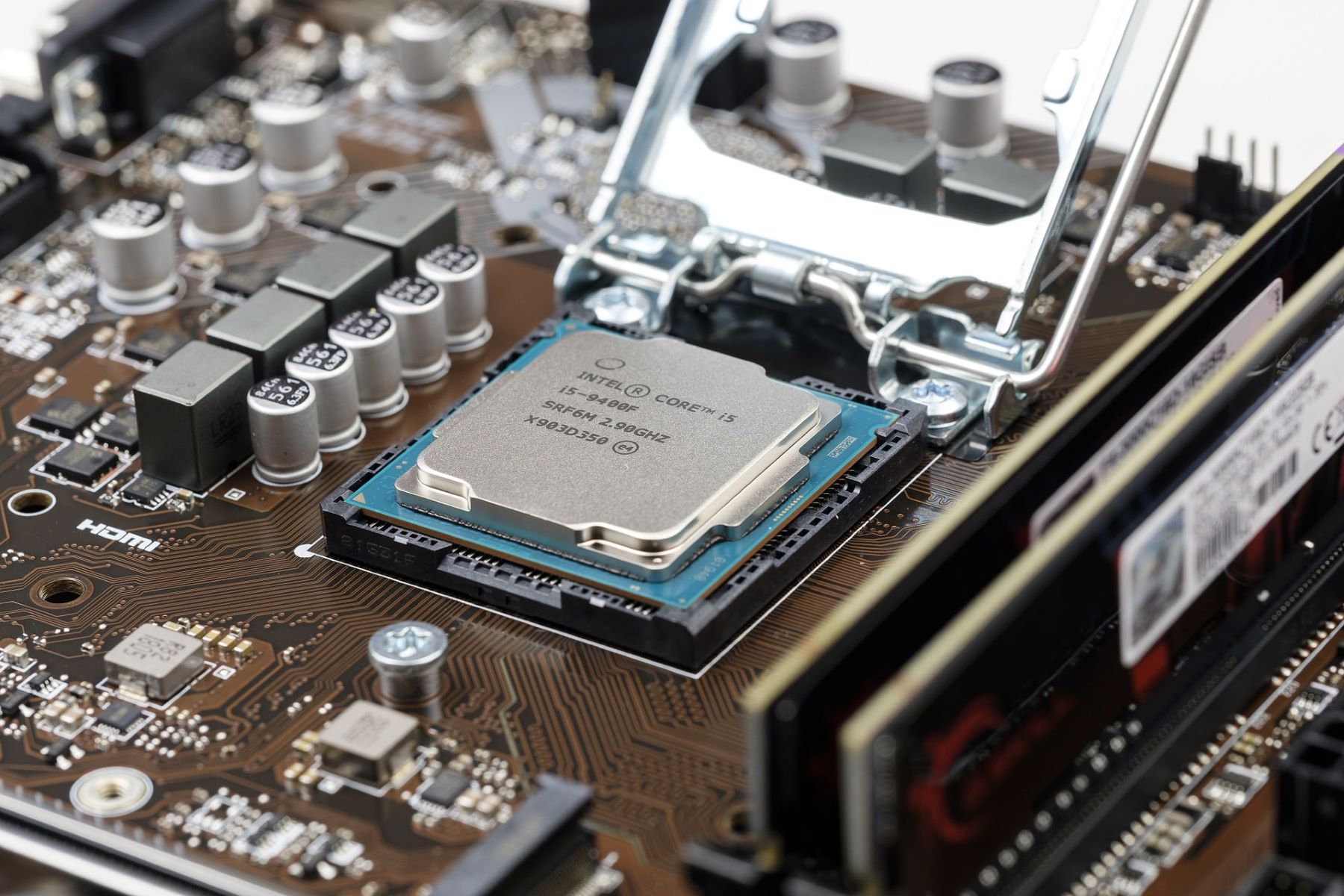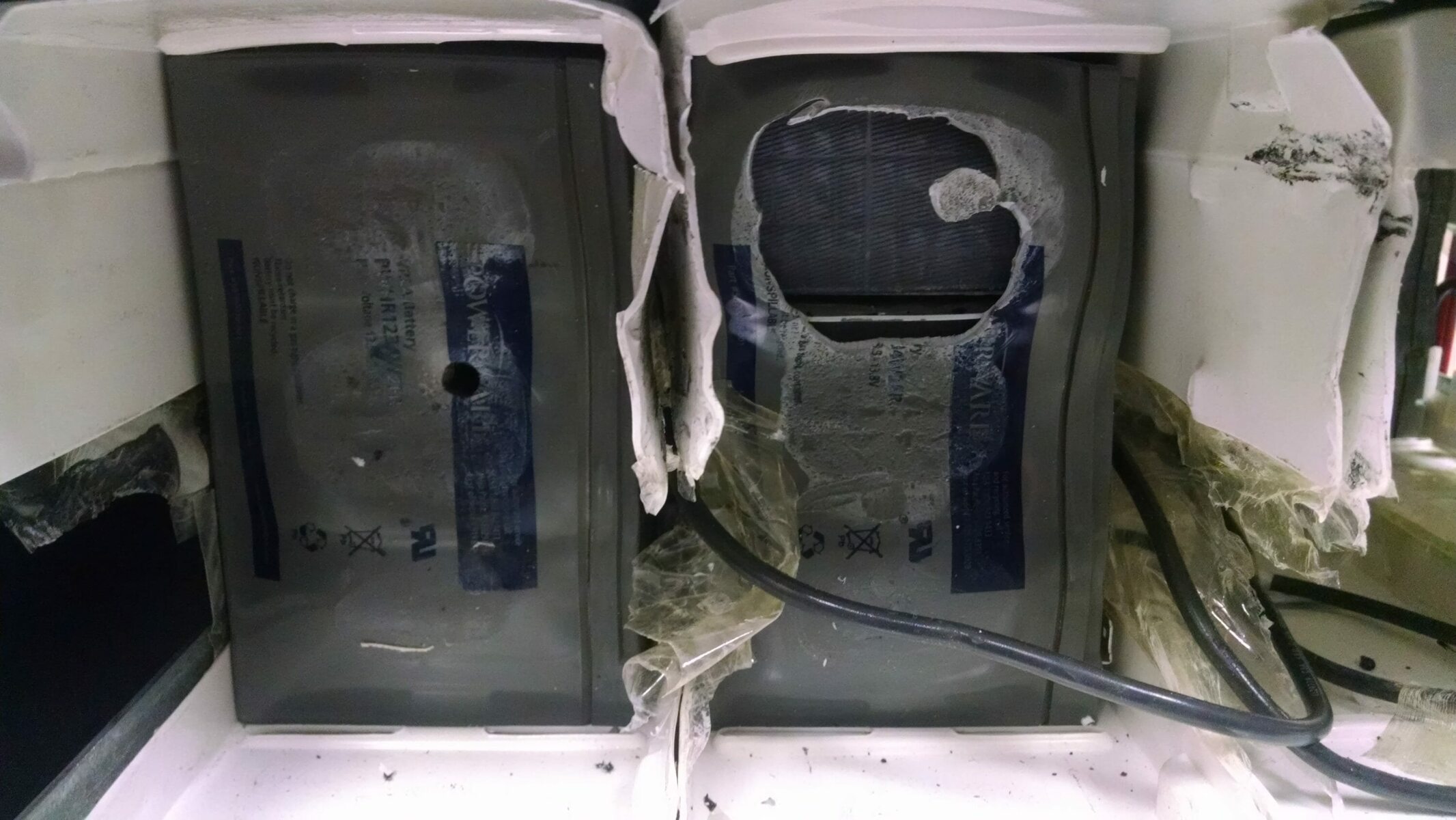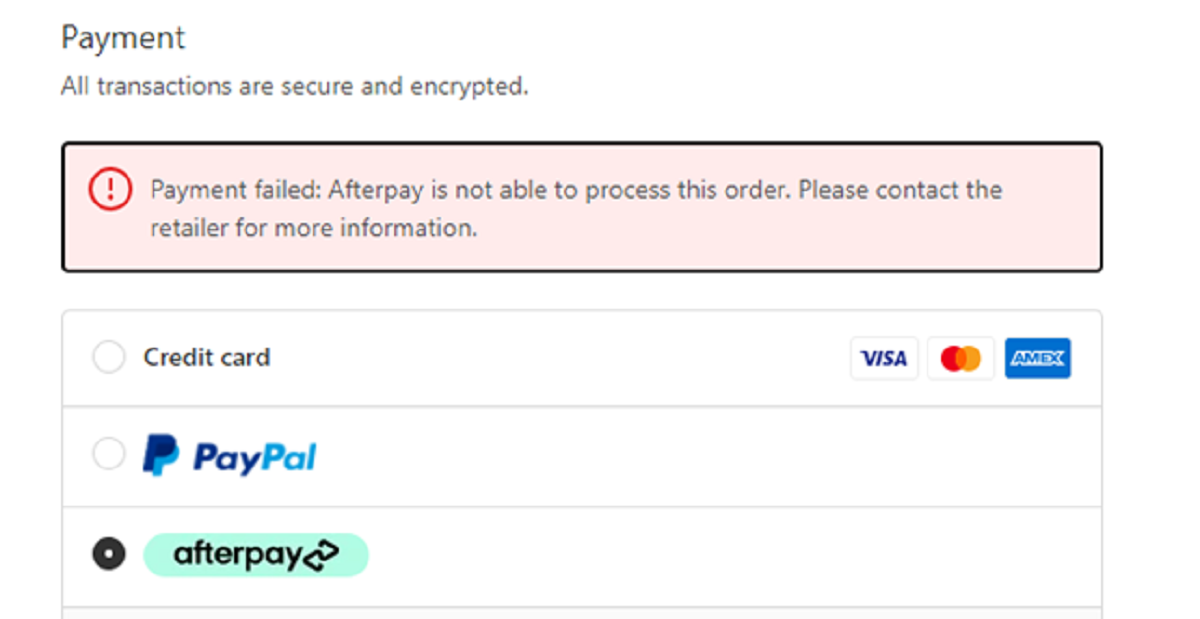Introduction
Welcome to our comprehensive guide on what happens when a UPS battery fails. Uninterruptible Power Supply (UPS) systems are essential for protecting critical electronic devices from power outages and fluctuations. The UPS battery is a fundamental component of these systems, providing backup power when the main power source is interrupted.
When a UPS battery fails, it can have significant consequences for the devices it is supposed to protect. Understanding the signs of a failing UPS battery, the potential risks and consequences, as well as the common causes of failure, is crucial for any business or individual relying on a UPS system.
In this article, we will explore the signs that indicate a UPS battery is failing and the potential risks associated with it. We will also discuss the common causes of UPS battery failure and provide steps to diagnose a failed UPS battery. Furthermore, we will outline the actions to take when a UPS battery fails and offer tips for preventing UPS battery failure through proper maintenance.
Whether you are an IT professional managing multiple UPS systems or a homeowner safeguarding vital equipment, knowing what to do when a UPS battery fails can be invaluable in protecting your devices and preventing downtime. So, let’s dive into the details to ensure you are well-prepared and equipped to handle a failing UPS battery.
What is a UPS Battery?
A UPS battery, or an Uninterruptible Power Supply battery, is a crucial component of a UPS system. The main purpose of a UPS battery is to provide backup power in case of a power outage or disruption. It acts as a bridge between the main power source and the critical electronic devices that are connected to the UPS.
A UPS system typically consists of three main components: the rectifier, the battery, and the inverter. The rectifier converts the incoming AC power from the main source into DC power to recharge the UPS battery. The battery stores this converted DC power and releases it when the main power source fails. The inverter then converts the DC power from the battery back into AC power, which is supplied to the connected devices.
UPS batteries come in various sizes and capacities, depending on the power requirements of the connected devices and the desired backup time. They are typically made of lead-acid or lithium-ion chemistry, with each type offering its own advantages and disadvantages.
Lead-acid batteries are more affordable and widely used in UPS systems. They are known for their reliability, high energy density, and ability to handle short bursts of high power. However, they have a shorter lifespan and require regular maintenance, such as checking the electrolyte levels and performing periodic battery replacements.
Lithium-ion batteries are gaining popularity in UPS systems due to their longer lifespan, lightweight design, and higher energy density. They do not require as much maintenance as lead-acid batteries and can provide a higher power output. However, they are more expensive upfront compared to lead-acid batteries.
Overall, UPS batteries are an essential component in ensuring uninterrupted power supply to critical devices. They offer peace of mind by safeguarding against power outages, voltage fluctuations, and electrical disturbances. Understanding the purpose and significance of UPS batteries is crucial in realizing their importance in various applications, including data centers, hospitals, telecommunications, and home electronics.
Signs of a Failing UPS Battery
A failing UPS battery can lead to potential power disruptions and damage to connected devices. It’s important to be aware of the signs that indicate a UPS battery is failing in order to take timely action and avoid any detrimental consequences. Here are some common signs to look out for:
- Shortened Battery Runtime: One of the most noticeable signs of a failing UPS battery is a significant reduction in its backup runtime. If you notice that the battery is not lasting as long as it used to, it could indicate a deterioration in its capacity and overall health. This can be observed through the UPS system’s monitoring software or the LED indicators on the device.
- Frequent Battery Replacements: If you find yourself replacing UPS batteries more frequently than usual, it may be a sign that there is an underlying issue with the batteries or the UPS system itself. Batteries that fail prematurely or require frequent replacements could be indicative of poor battery quality, incorrect charging practices, or other system-related problems.
- Audible Alarms and Critical Alarms: Most UPS systems are equipped with audible alarms or visual indicators that emit warnings when there is a problem with the battery. These alarms can range from beeping sounds to flashing lights. If you hear or see an alarm, it’s important to investigate and take appropriate action promptly to address the issue.
- Increased Heat Generation: A failing UPS battery may exhibit increased heat generation during normal operation. If you notice that the battery feels unusually hot or if you detect a burning smell near the battery compartment, it could indicate a problem with the battery cells or charging circuitry. Excessive heat can accelerate battery degradation and even pose a fire hazard, so it should be taken seriously.
- Visible Physical Damage: Physical damage to the UPS battery, such as leakage, bulging, or corrosion on the terminals, is a clear indication of battery failure. These visible signs suggest internal damage to the battery cells, compromising their performance and reliability. If you come across any of these signs, it’s important to replace the battery immediately.
Being vigilant and proactive in recognizing these signs can help you address a failing UPS battery before it leads to power disruptions or irreparable damage to your valuable equipment. Regular monitoring and maintenance of the UPS system can also assist in identifying any potential issues early on, ensuring the reliability and longevity of your UPS battery.
Potential Risks and Consequences
A failing UPS battery can pose several risks and consequences, especially if left unaddressed. It’s crucial to understand these potential risks to fully grasp the importance of timely battery replacement or repair. Here are some risks and consequences associated with a failing UPS battery:
- Power Disruptions: The primary purpose of a UPS system is to provide uninterrupted power to critical devices. When a UPS battery fails, it can result in power disruptions, leaving connected equipment vulnerable to sudden power outages. This can lead to data loss, equipment damage, and disruption of critical operations.
- Data Corruption or Loss: Power interruptions caused by a failing UPS battery may result in data corruption or loss, especially in systems that rely on constant power supply to function properly. Corrupted or lost data can be disastrous for businesses, leading to financial losses, compromised customer information, and potential legal issues.
- Reduced Equipment Lifespan: Electronics and sensitive equipment are not designed to handle abrupt power changes. When a UPS battery fails and causes power disruptions, the connected devices may experience sudden power surges or voltage fluctuations, potentially shortening their lifespan.
- Increased Downtime: If critical systems rely on a UPS to maintain continuous operation during power outages, a failing UPS battery can result in increased downtime. The time and effort required to troubleshoot the battery failure and replace it can lead to productivity losses and a negative impact on business operations.
- Fire Hazards: In rare cases, a failing UPS battery can lead to overheating or even ignite, posing a fire hazard. Overheating can occur due to internal battery malfunctions or excessive current draw during power disruptions. Fire incidents can cause significant damage to equipment, infrastructure, and, most importantly, endanger the safety of individuals present in the vicinity.
Recognizing and mitigating these potential risks and consequences is crucial to ensure the reliability and safety of your critical systems. Regular maintenance, monitoring, and prompt replacement of failing UPS batteries minimize the likelihood of experiencing these risks, helping to maintain the integrity and continuity of your operations.
Common Causes of UPS Battery Failure
Understanding the common causes of UPS battery failure can help you take preventive measures and extend the lifespan of your UPS battery. While batteries may eventually degrade over time, certain factors can accelerate this process. Here are some common causes of UPS battery failure:
- Aging: Over time, all batteries naturally age and lose their capacity to hold a charge. This is a gradual process that occurs as a result of chemical reactions within the battery cells. As a UPS battery ages, its runtime decreases, increasing the risk of failure during power outages.
- Overcharging or Undercharging: Incorrect charging practices can significantly impact battery performance and lifespan. Overcharging can lead to excessive heat generation, electrolyte loss, and accelerated degradation of the battery cells. On the other hand, undercharging can lead to sulfation, a condition where lead sulfate crystals build upon the battery plates, reducing capacity and overall performance.
- High Ambient Temperatures: UPS batteries are sensitive to high temperatures, as heat accelerates chemical reactions and can cause the battery to deteriorate faster. Exposure to elevated ambient temperatures, especially without proper cooling or ventilation, can shorten the lifespan of the battery and increase the chances of premature failure.
- Improper Storage: If UPS batteries are not stored correctly, their lifespan can be affected. Batteries should be stored in a cool, dry place, away from direct sunlight and extreme temperatures. Failure to store batteries properly can lead to self-discharge, reduced capacity, and potential damage.
- Electrolyte Loss: In lead-acid batteries, the electrolyte solution is vital for battery operation. If the battery experiences leakage or if the electrolyte levels drop below the recommended levels, the battery’s capacity and performance can be compromised. Regular maintenance and monitoring of electrolyte levels are crucial to preventing battery failure due to electrolyte loss.
- Manufacturing Defects: While rare, manufacturing defects can contribute to UPS battery failure. These defects can include issues with cell connections, faulty internal components, or insufficient electrolyte fill. It’s important to choose reputable battery manufacturers and perform quality checks during installation to minimize the risk of batteries with manufacturing defects.
By understanding these common causes of UPS battery failure, you can take appropriate measures to mitigate the associated risks. Regular maintenance, proper charging practices, monitoring of battery health, and adherence to manufacturer’s guidelines can help prolong the life of your UPS battery and ensure its reliable operation when you need it most.
How to Diagnose a Failed UPS Battery
Diagnosing a failed UPS battery requires a systematic approach to isolate the cause of the problem. Here are some steps you can take to determine if your UPS battery has failed:
- Check Battery Runtime: Start by checking the reported runtime of the UPS battery. If the runtime is significantly lower than the expected or advertised runtime, it may indicate a decrease in battery capacity or overall health. Compare the current runtime with the initial runtime when the battery was new to assess any noticeable differences.
- Inspect LED Indicators: Most UPS systems are equipped with LED indicators that display the status of the battery. Check the LED lights on the front panel of the UPS and refer to the manufacturer’s documentation to interpret the meaning of each indicator. An illuminated LED indicating a battery fault or a specific error code can help in diagnosing a failed UPS battery.
- Use UPS Monitoring Software: If your UPS system is connected to a computer, check the monitoring software provided by the manufacturer. The software can provide valuable information about the battery’s condition, including runtime, discharge rate, battery health, and any error messages or warnings. Monitor the battery parameters over time to identify any significant changes.
- Perform Load Testing: Load testing involves disconnecting the UPS system from the main power source and connecting a known load (e.g., a light bulb) to it. Monitor the behavior of the UPS during this test. If the UPS cannot sustain power to the load for the expected runtime, it could indicate battery failure.
- Conduct Battery Voltage Measurements: Using a multimeter, measure the voltage of the UPS battery. Compare the measured voltage with the manufacturer’s specified voltage range. If the voltage is significantly below the recommended range, it could indicate a failing battery that is unable to hold a charge.
- Consult with Professionals: If you are uncertain about the condition of your UPS battery or are unable to diagnose the issue on your own, consider consulting with professionals or contacting the UPS manufacturer’s technical support. They can provide guidance, perform more in-depth tests, and recommend appropriate solutions based on your specific situation.
Remember that diagnosing a failed UPS battery requires careful observation and analysis of various factors. It’s important to consider multiple indicators and consult with experts if needed to ensure an accurate diagnosis. Once you have determined that the UPS battery has indeed failed, you can proceed with the necessary steps to replace or repair the battery and restore the reliability of your UPS system.
Steps to Take When a UPS Battery Fails
When a UPS battery fails, prompt action is essential to prevent further issues and restore the functionality of your UPS system. Here are the steps to take when you encounter a failed UPS battery:
- Assess the Situation: Begin by identifying the symptoms that indicate a failed UPS battery. This could include a significant decrease in runtime, audible alarms or error messages, or physical damage to the battery. Assess the severity of the situation and its impact on the connected devices or critical operations.
- Isolate the UPS System: Safely isolate the UPS system and disconnect it from the main power source. This ensures that no electrical current is flowing to the UPS or the connected devices, preventing any potential damage or safety hazards while handling the failed battery.
- Inspect the Battery: Carefully examine the failed UPS battery for any visible damage, such as leaks, bulges, or corrosion. Take note of any relevant information, such as the battery model, serial number, and manufacturing information, as it may be required for warranty claims or replacement purposes.
- Replace or Repair the Battery: Depending on the severity of the battery failure and the type of UPS system, you can choose to replace or repair the failed battery. If the battery is still under warranty, contact the manufacturer or authorized reseller for a replacement. If the warranty has expired, consider purchasing a new battery from a reputable supplier or consulting with a professional to repair the existing battery if possible.
- Dispose of the Failed Battery Properly: It’s important to dispose of the failed UPS battery correctly to prevent any environmental impact. Follow local regulations and guidelines for battery disposal, as lead-acid and lithium-ion batteries require specific handling procedures. Contact a recycling facility or seek guidance from a qualified professional regarding proper disposal methods.
- Reconnect and Test: Once the failed battery has been replaced or repaired, reconnect the UPS system to the main power source and the connected devices. Perform thorough testing to ensure that the new battery functions correctly and provides the expected backup power. Monitor the system closely for any abnormalities or issues.
- Update Maintenance Practices: Take this opportunity to review and update your maintenance practices for the new UPS battery. Implement proper charging procedures, regular monitoring, and other recommended maintenance tasks to extend the lifespan of the battery and ensure its optimal performance.
By following these steps, you can effectively address a failed UPS battery and restore the functionality of your UPS system. However, it’s important to note that prevention is key, and implementing proactive measures, such as regular maintenance and monitoring, can help prevent battery failure and minimize the impact of any potential failures in the future.
Maintenance Tips to Prevent UPS Battery Failure
Regular maintenance is essential in preventing UPS battery failure and ensuring the reliability of your UPS system. By following these maintenance tips, you can extend the lifespan of your UPS battery and minimize the risk of unexpected failures:
- Monitor Battery Health: Use the monitoring software provided by the UPS manufacturer to regularly monitor the health and status of the UPS battery. Keep track of runtime, charge/discharge cycles, and other relevant battery parameters. By monitoring battery health, you can detect any abnormalities or signs of degradation early on.
- Implement Proper Charging Practices: Follow the manufacturer’s guidelines for charging the UPS battery. Avoid overcharging or undercharging the battery, as this can lead to premature battery failure. Ensure the battery receives regular charging intervals and maintain a balanced charging process to prevent sulfation and other battery-related issues.
- Control Ambient Temperature: Monitor the operating temperature of your UPS system and maintain it within the recommended range. High temperatures can accelerate the aging process of the battery and decrease its overall lifespan. Ensure proper ventilation and cooling to keep the system and battery at an optimal temperature to prevent thermal stress.
- Perform Regular Inspections: Conduct routine visual inspections of the UPS system and battery to check for any signs of physical damage, leakage, or corrosion. Address any issues promptly to prevent further damage or potential failure. Additionally, clean the battery terminals and connections regularly to maintain good conductivity and minimize resistance.
- Perform Battery Testing: Test the UPS battery periodically to assess its overall condition and capacity. This can be done by conducting load tests or using specialized battery testing equipment. Regular testing can reveal any potential issues with the battery and allow for timely action to be taken, such as replacement or repair.
- Follow Manufacturer’s Maintenance Recommendations: Refer to the manufacturer’s documentation and guidelines for specific maintenance recommendations for your UPS system and battery. They may provide additional instructions on maintenance intervals, recommended replacement timelines, and other important considerations for ensuring optimal battery performance.
- Keep Battery Environment Optimal: Ensure that the environment in which the UPS battery is located is clean and free from excessive dust, moisture, and other contaminants. Foreign particles can lead to short circuits or reduce the efficiency of heat dissipation, affecting the battery’s performance and lifespan.
By incorporating these maintenance tips into your routine, you can protect your UPS battery from unnecessary failures and maximize its lifespan. Remember that a well-maintained UPS battery will provide consistent and reliable power backup when you need it most, ensuring the continued operation and protection of your critical devices and systems.
Frequently Asked Questions
Here are some frequently asked questions about UPS battery failure and maintenance:
- How long do UPS batteries typically last?
The lifespan of a UPS battery can vary depending on factors such as battery chemistry, usage patterns, and environmental conditions. Generally, a lead-acid UPS battery may last between 3 to 5 years, while lithium-ion batteries can last up to 8 to 10 years. - Can I use any type of battery for my UPS system?
It is recommended to use the battery type specified by the UPS manufacturer or one that is compatible with your UPS system. Different UPS systems have different voltage and charging requirements, and using the wrong type of battery can lead to inefficiencies or even damage to the UPS. - How often should I perform maintenance on my UPS battery?
Regular maintenance on UPS batteries should be performed at least twice a year. This includes visual inspections, battery testing, and cleaning of terminals. However, it is always recommended to consult the manufacturer’s guidelines for specific maintenance recommendations. - What are the best practices for UPS battery storage?
When storing UPS batteries, it’s important to keep them in a cool, dry place away from direct sunlight and extreme temperatures. Lead-acid batteries should be stored in a well-ventilated area to prevent the buildup of explosive hydrogen gas. - Can I replace a UPS battery on my own?
Many UPS systems are designed for easy battery replacement, and it can be done by individuals with basic knowledge and proper safety precautions. However, if you are unsure or uncomfortable with the process, it is recommended to consult with professionals or contact the UPS manufacturer for guidance. - What are the signs of an overcharged UPS battery?
Signs of an overcharged UPS battery may include excessive heat generation, bulging or swelling of the battery casing, electrolyte leakage, or a strong smell of sulfur. If you notice any of these signs, it’s important to address the issue immediately to prevent further damage. - How can I dispose of a failed UPS battery?
UPS batteries should be disposed of properly to prevent environmental pollution. Many countries have regulations in place for battery disposal. Contact your local recycling facility or consult with professionals who specialize in battery recycling to ensure the safe and environmentally friendly disposal of your UPS battery.
If you have any more questions or concerns about UPS battery failure or maintenance, it is always recommended to seek advice from professionals or consult with the UPS manufacturer for tailored guidance based on your specific UPS system and battery model.
Conclusion
Understanding the causes, signs, and consequences of UPS battery failure is crucial for ensuring the uninterrupted operation of critical devices and systems. By recognizing the signs of a failing UPS battery, you can take prompt action to address the issue and prevent potential risks such as power disruptions, data loss, and equipment damage.
Regular maintenance and proper care of UPS batteries are essential for extending their lifespan and maintaining their optimal performance. By implementing practices such as monitoring battery health, following correct charging procedures, controlling ambient temperatures, and conducting routine inspections and testing, you can prevent unnecessary UPS battery failures and minimize downtime.
When a UPS battery does fail, it’s important to take swift and appropriate steps to replace or repair the battery. By following proper handling and disposal procedures, you can ensure the safe and environmentally friendly management of failed UPS batteries.
Remember, prevention is key when it comes to UPS battery failure. Proactive maintenance, adherence to manufacturer’s guidelines, and regular monitoring are vital in maintaining the longevity and reliability of UPS batteries.
By implementing the tips and guidelines provided in this article, you can safeguard your critical systems and devices, ensuring uninterrupted power supply and peace of mind.
























